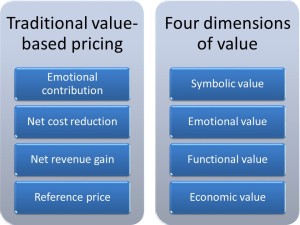 A change in marketing logic is underway. The perception that markets are a place where goods are exchanged for money is being replaced with a more nuanced view of service as the fundamental basis of exchange and value as subjective, consisting of multiple dimensions, and realized only through use.
A change in marketing logic is underway. The perception that markets are a place where goods are exchanged for money is being replaced with a more nuanced view of service as the fundamental basis of exchange and value as subjective, consisting of multiple dimensions, and realized only through use.
Why is this shift taking place? Has the world changed? Or has our understanding of the world improved? Why didn’t we think of this before?
Continue reading “The time is right for service-dominant logic”



















